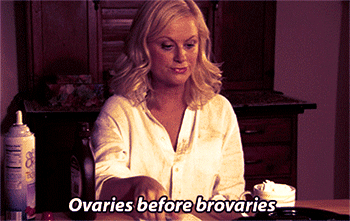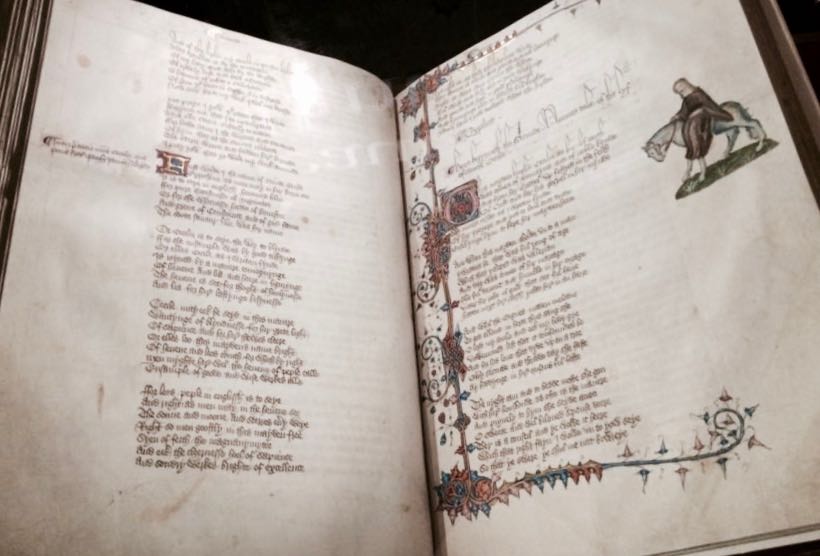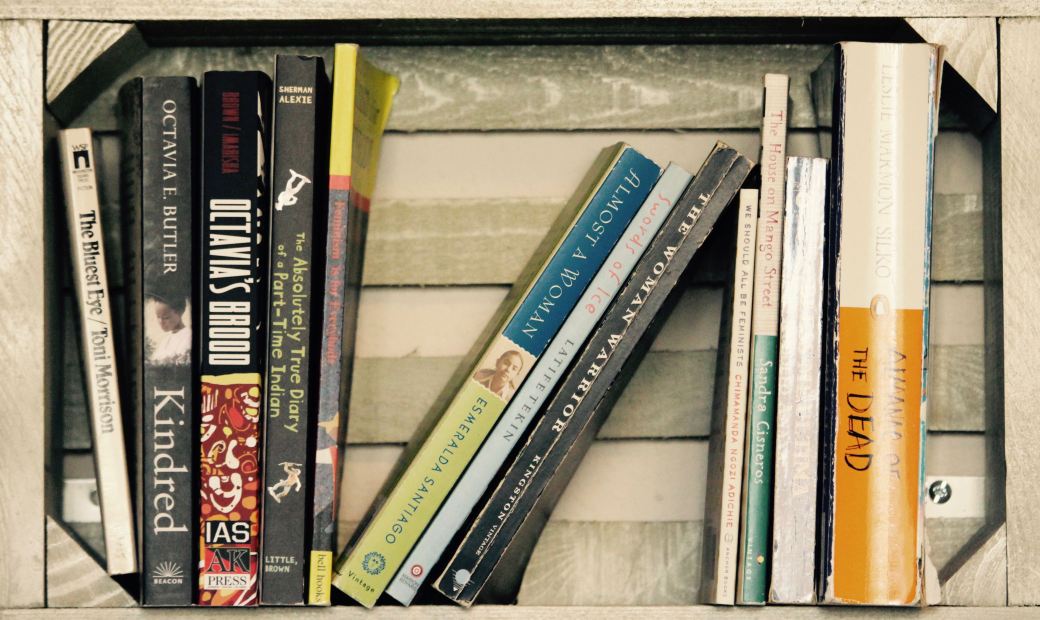“And he would take a roadside attraction, no matter how cheap, how crossed, or how sad, over a shopping mall, any day.”
–Neil Gaiman, American Gods
What do a naked bookseller, a pair of shoes made of human flesh and a giant meteor crater have in common? No idea? Well, they were all part of my recent cross-country road trip with my friend and regular road buddy Tim. We have been talking for years about making such a trip, but work and life always seemed to get in the way of a long trip like that. But, with each of us losing a parent within six weeks of each other, we knew that hitting the road was the best way to take care of ourselves amid the wave of grief and emotion that follows such loss.
Our trip was planned around a second memorial service for Tim’s mom in her hometown of Bushnell, Illinois, and it had only been a few weeks since my dad died when we set off on the road. The two months leading up to the road trip had been filled with picking up the pieces after the loss of both our parents and all the crazy emotions that go with that. We both knew that simply going back to our normal lives right after we had been through all that was not an option. I could write pages and pages about the emotion of losing a parent for the second time and finding myself suddenly an adult orphan, but this isn’t that kind of story. The first time I dealt with this kind of loss, I was not so good at taking care of myself. This time I want to make things different. And that is what inspired me to get on the road.
Tim had made the drive to Bushnell many times with his mom, but I had never driven through the states on our route. Armed with my trusty Honda Civic filled with luggage and snacks, the Roadside America app and a sense of adventure, we hit the road on Monday, July 4. Road trips seem like such a strong part of American culture, especially for someone who grew up in the LA area where our entire existence is designed around freeways, traffic and the almighty car. Thus, it seemed fitting to set off on Independence Day.
In a time where a family can make a whole trip out of just visiting the Disneyland resort, and attractions are often fine-tuned operations that run with high levels of precision in order to maximize the guest experience, it is easy to miss the humble roadside attractions–many of which are relics of days gone by when they littered the highways of America to provide entertainment to weary travelers making their way across the country by car. I have always been fascinated by these old museums, oversized statues and roadside oddities. These are the places that really tell the story of this country, and they are often run by some of the most fascinating and dedicated people I have ever met on my travels. I think Neil Gaiman is onto something in American Gods, when he points out that roadside attractions are some of the most sacred spots in the U.S.
I have often felt the pull of a sign that notes a historical site or a billboard announcing some strange artifact. It is in these places that we find the stories that weave together into defining American culture. We are more than flashy, high tech attractions–such places may be entertaining, but they really do not even break the surface of our histories. Americans often lament that we have no unique culture, but I disagree with this. Our culture and our history can be found if you look in the right places. Our real stories are found in the dusty roadside oddities and the people who care for them. And if this trip was truly going to be a reset for us after the difficult couple months we had just experienced, it was going to have to involve some interesting stops along the way.
Our first overnight was in Flagstaff, Arizona with a stop for dinner with Tim’s awesome Uncle Mel and Aunt Marcia just outside of Phoenix. On our way there, I decided to test out the Roadside America app, which immediately proved that it was worth every penny I spent on it. As we drove along the 10 East, I tried out the “Near Me” feature on the app and saw a listing for “Naked Bookstore Owner.” I turned to Tim and said, “Oh, we have to go here.” Then I proceeded to give him directions to Reader’s Oasis in Quartzsite, Arizona, a dusty used bookstore just off the 10 in the middle of the desert. The store lacks air conditioning, but there are fans and the owner is generous with offers of ice water while you browse. There are shelves stacked high with books that wind all over in a strange desert labyrinth that any reader would celebrate getting lost in. A trailer sticks out of the front of the store, which provides even more space for books.
Reader’s Oasis is run by Paul Winer, also known as Sweetie Pie. Paul is a bit of a legend, and he has been running the bookstore in Quartzite for more than 20 years. A quick Google search will turn up a number of pictures and stories about this unusual man who freely welcomes visitors to take his picture. My first introduction to Paul was walking around a shelf filled with old volumes covered in plastic to keep the desert dust from filling the pages. There was Paul’s very tanned, bare butt as he bent over a stack of books he was stocking on a shelf that he later told us had tragically collapsed that morning. I have been in a lot of bookstores, and I have to see that this was the first time I had encountered such a view.
Once you get over the fact that Paul is wearing no more than a hat, flip flops and a strategically placed pouch, he’s really a nice and interesting guy. He is an accomplished blues musician and has a piano in his store. We had a nice talk with him about the purpose of our trip and a touching conversation about the difficulties of losing a parent and grief in general. Paul is a one-of-a-kind bookseller, and I highly recommend taking the time to visit him out in Quartzsite if your travels take you that way.



Our drive on the first day also took us by the Hobo Joe statue, which was a bit off the highway but worth a stop for a quick picture in the 100+ degree heat. We followed the directions to the address for Hobo Joe and were about to turn back because we ended up turning down a lonely, desolate road in an industrial area, but suddenly he popped up as we made our way down the street. Hobo Joe is 25-feet tall and stands in front of a slaughterhouse. He was meant to stand in front of a Hobo Joe Coffee Shop, but the chain closed, and a friend of the deceased owner gave Hobo Joe a home in this spot in 1989. If you have the hobo spirit in you, throw a bindle over your shoulder and take a detour to meet Hobo Joe.
The next day, we drove on to visit friends in Antonito, Colorado, a drive that included a stop at the Bicentennial Moon Tree in Flagstaff, Arizona–a tree that was supposedly grown from seeds that had been to the moon. The story goes that someone pulled out the original tree out of the ground three days after it was planted in April 1976. The faded, old sign for the tree is still there as well as the replacement tree (from non-moon seeds), and it sits on the edge of a beautiful pond. Go visit to remember the moon tree that once was, and let your imagination take over and pretend that the stunted tree that grows there now came from seeds that had journeyed to the moon.
On the drive to Antonito, we also visited the Meteor Crater outside of Winslow, Arizona. The crater was formed approximately 50,000 years ago and is nearly one mile across, 2.4 miles in circumference and over 550 feet deep. There is a museum that contains exhibits on the space program and meteors. The crater was used as a training ground for astronauts preparing to travel to the moon, so it has a strong link to the history of American space travel. As the daughter of two people who met while working as computer programmers at the Jet Propulsion Laboratory, this place was a real treat.
When I was in the passenger seat, I had started going through the app and looking at attractions on our route. I kept saving the ones I wanted to see, and it became a game to mark things as “Been There.” As the rest of the country was getting hooked on Pokemon Go, I was creating my own little Roadside Attractions scavenger hunt.
I have travelled in the U.S., but aside from numerous west coast road trips, all my travels in the U.S. involved air travel. Seeing the U.S. form the car with the option of stopping to see fun and quirky pieces of Americana really gave me a version of the country that hopping around by plane doesn’t provide.
Our friends Earl and Louise in Antonito drove us around the town, which had a population of 781 as of the 2010 census. The town boasts several interesting landmarks, including the house that was used as Indiana Jones’s childhood home in Indiana Jones and the Last Crusade as well as a junk castle built by a man named Cano. Cano calls it Jesus’s Castle, and he claims that Jesus has been living there since 1987. We just drove by, and this is a private residence, so I didn’t take pictures. You can follow the link above to read more about Cano’s story and to see pictures from when the Roadside America people visited the castle and talked to Cano himself.
- Our view in Antonito
- Met these two friendly horses during our Colorado visit
We had a relaxing couple days with our friends in Antonito before hitting the road again–a drive that took us through Southern Colorado and across Kansas before settling in Junction City for the night. A number of people had told me that parts of the drive would be long and flat. As a California girl who grew up in the foothills of the San Gabriel Mountains, the flat, open spaces that stretched for miles and miles were a bit jarring. It finally dawned on me that when you grow up in a place with varied geography and plenty of mountain ranges in the distance, there is always some sense that there is more and that there are all kinds of things over the mountains. With the flatness of the Midwest, especially when out in rural areas, the fields just seem to stretch out forever as though that is all the world is made up of.
Now, I don’t want you to think I don’t like the Midwest because of this. There are actually quite a few things to like about the middle of America, which I will elaborate on in my next post. I just need to admit that I am spoiled by living in California when it comes to the view. I don’t think our geography can be beat, and it sets the bar quite high.
Our drive from Junction City to Bushnell, Illinois included a stop at the General John J. Pershing Boyhood Home in Laclede, Missouri. Tim’s last name is Pershing, and the General is a distant relation of his, so I knew we had to make a stop. The site includes the home, a schoolhouse and museum. Perhaps the most interesting bit of history for me was General Pershing’s connection to the Patton family. My great-grandmother Ellen Dyer Stephens was the cook for the parents of General George Patton for years in San Marino, California. Even after she stopped working for the family, she maintained a good relationship with them, and they helped pay for a private room and nurse for my grandma when she broke her hip tobogganing at age 19. I even found General Patton’s sister’s name in the guest book for my grandma’s bridal shower. At the museum, I learned that General Pershing had a brief relationship with General Patton’s sister Nita. It’s just a reminder that even when traveling thousands of miles, you find that the world is indeed a small place.
So, I am going to leave off here for this post and pick up this story in my next post. If you want to know what is happening in the pictures below, be sure to visit my blog later this month. And, of course, you will hear the story of the shoes made of human skin in Wyoming. You may even be treated to tales of ham salad. Don’t miss out!
For anyone planning a road trip, I highly recommend the Roadside America app. I am not being paid to endorse their app or website; I am just a huge fun. I opted for the full version (includes attractions in the U.S. and Canada) at $8.98–less than what you would pay for most travel books. You can get just one region for $2.99 if you don’t want the full version, but I would recommend getting all of it to inspire future travels.
Pictures at Reader’s Oasis, me at the Meteor Crater and the horses in Antonito were taken by Tim Pershing. All other photos are by me.

























 So the
So the 
 Last year I achieved a win in my first
Last year I achieved a win in my first 

 I did a funny thing at the start of the year. When most people are making
I did a funny thing at the start of the year. When most people are making  I am trying to make at least one walk a week a hike in one of the wilderness areas in my area. Recently, I have been able to take advantage of the nearby Laguna Canyon hiking trails with a good friend. The first time we went, we took a route that started in a steady two-mile hike uphill before giving way to a beautiful view from atop a ridge and an easy downhill hike back to our car. The next time we went, we decided to try a different trail—one that took us up an extremely steep 1.5-mile climb that made the previous uphill hike seem easy. There were several times I found myself scrambling up using my hands and feet as I hoped and prayed that I would not slide down the hill. I have not done a lot of hiking in my life, so I am still relatively new to this activity. I can easily say this was one of the most challenging hikes I have done.
I am trying to make at least one walk a week a hike in one of the wilderness areas in my area. Recently, I have been able to take advantage of the nearby Laguna Canyon hiking trails with a good friend. The first time we went, we took a route that started in a steady two-mile hike uphill before giving way to a beautiful view from atop a ridge and an easy downhill hike back to our car. The next time we went, we decided to try a different trail—one that took us up an extremely steep 1.5-mile climb that made the previous uphill hike seem easy. There were several times I found myself scrambling up using my hands and feet as I hoped and prayed that I would not slide down the hill. I have not done a lot of hiking in my life, so I am still relatively new to this activity. I can easily say this was one of the most challenging hikes I have done.



